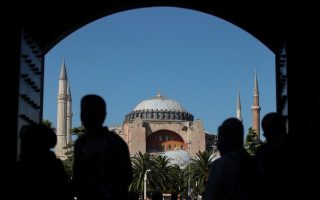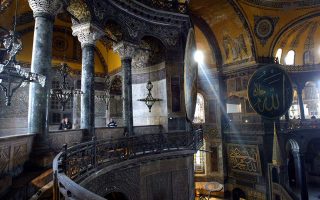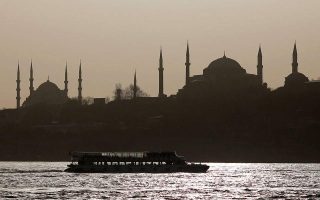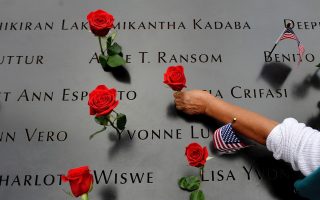Requiem for a cosmopolitan dream
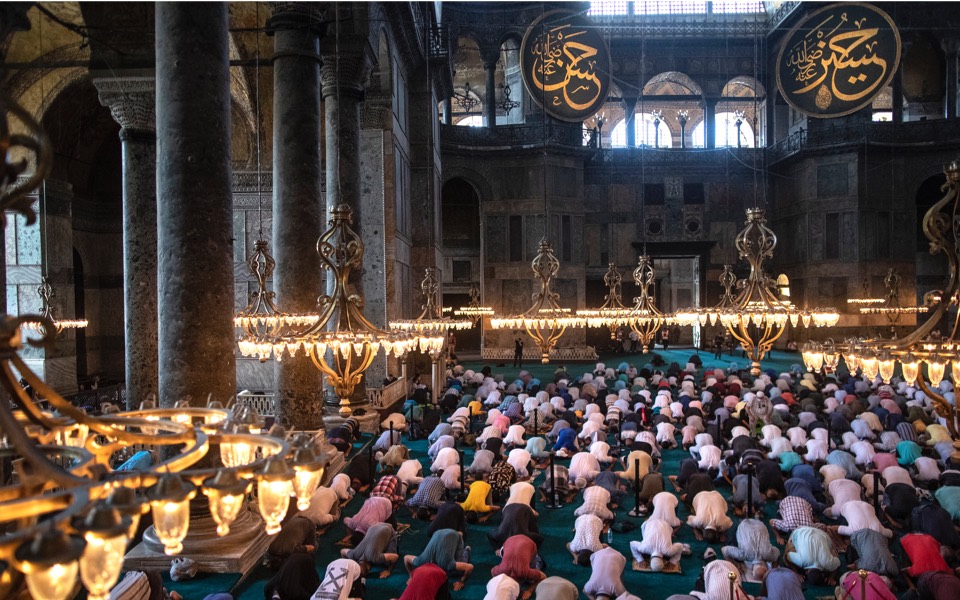
Attila did not seem surprised when I told him I was Greek. We were at the entrance of the Hagia Sophia museum on a rainy, cold December morning, and for the next hour, he would guide me through the most popular tourist attraction in Istanbul. What I did not tell him was that I had studied the basilica in a Byzantine archaeology course during my time at university: the engineering complexity of the dome making it appear as if it were hovering, the expensive decorative materials and marbles from around the empire, and the exquisite gold tiles which give historians a unique window into the Byzantine ideology.
However, nothing could prepare me for the awe which I felt on first entering Hagia Sophia. It can only be compared with a hike to the Acropolis and a viewing of the Parthenon, but with drastically different results. The light on the Acropolis is captivating while the dim light in Hagia Sophia feels mystical. It was like the history of the Byzantine Empire came alive in a way that no picture could ever transmit.
Attila did not stop talking about the history of the building, its conversion into a mosque and efforts to restore the mosaics since it became a museum. He spent almost half of the tour showing the changes made for the mosque conversion and explaining why they were needed. I was listening with patience – I preferred it for him speak of all that I already knew.
I remembered that during the Justinian era, the Parthenon was transformed into a church, with the addition of Byzantine mosaics and a bell tower. Is it the fate of every past religion to feed those that follow with inspiration? The Blue Mosque was made as a copy of Hagia Sophia, with the goal of being more opulent, but instead of the golden dome, it was given six minarets.
Toward the end of the tour, my Turkish guide showed me the area from which the women watched the sermon, and specifically the spot from which Byzantine empresses watched. To the left and right there were shields with passages from the Quran, in the background, you could discern the Virgin Mary in the famous Mosaic of the Apse. I was haunted by the cries of history. These were cries that the conversion of the mosque into a museum had mostly silenced.
Coming out into the plaza, I found a spot from which – using a trick – I managed to take some pictures of Hagia Sophia without the minarets in the frame. Immediately, the result felt sweet and harmony returned.
Even though the building was unveiled to me for its primary use, the reality around me had evolved into what UNESCO protects as a monument of global heritage and Westerners love in Istanbul: the outcome of centuries of history which create a mosaic of different cultures and religions.
The vision of President Recep Tayyip Erdogan is different. His vision for the city is one where conservative Islam returns as a political ideology. The Islamization in which Erdogan has indulged as a new reincarnation of the Conqueror is taking aim at the secular state of Kemal Ataturk, and the conversion of Hagia Sophia into a mosque is the symbolic arrow to the heart of Ataturk’s secular vision, part of which was the conversion of Hagia Sophia into a museum in 1934. For the Nobel Laureate Orhan Pamuk, it is a statement to the world that “we are no longer a secular state.” For Christianity and the religious and ethnic minorities of Turkey, however, Erdogan’s decision brings back the worst memories of the persecutions that gave birth to the Turkish nation-state.
Even those who do not care whether Hagia Sophia is a mosque or museum, those who do not feel the insult toward Orthodox Christians or the fear of the minorities, will sense the change during their next visit. This decision buries the multicultural character of Istanbul as this becomes reduced to a distorted, empty shell. What remains is what Marwa Maziad and Jake Sotiriadis describe in their article that Kathimerini republished on May 11: a vision of Pan-Islamism, a culturally hegemonic type of political Islam which seeks to revitalize a greater Turkey. The blow to the international image of the country, as described by the director of the Turkish Research Program at The Washington Institute, Soner Cagaptay, is the smallest of problems.
